| T O P I C R E V I E W |
| Lenny |
Posted - Apr 12 2015 : 08:14:40 AM
If you have a lazy Sunday afternoon, check this out.
Go to
>>>>> Member Collektions
>>>>> Okynek
>>>>> Other Cameras
>>>>> Unknown camera, no lens
There are 15 interesting pictures. What is this? I like it.
If this was a topic before and discussed already, I'm sorry,
I'm having my lazy Sunday afternoon.
|
| 13 L A T E S T R E P L I E S (Newest First) |
| Vlad |
Posted - Apr 28 2015 : 8:47:24 PM
Altix, thank you, it is most fascinating to see that Soviet AFA cameras (picture I posted) are copies of German ones, I had no idea, great info! The casing built around a Moment shutter makes that camera for me personally very collectible as I consider it Soviet just in regards to having it in my collection.
More AFA cameras can be viewed here on Mr. Abramov's wonderful site:
http://photohistory.ru/1207248179952431.html
Best regards,
Vlad.
|
| okynek |
Posted - Apr 28 2015 : 11:12:07 AM
Thank you altix for very interesting information!
I would be happy if somebody discovered German analog from which our cameras was derived. At list we would know if this is areal camera, medical camera, or it was used on as ship, or for scientific researches. For now I have more questions then answers.
The fact that these cameras was discovered on the end of the last millennium do not say much. They may be made in 50s, or in 80s or somewhere in between. And the fact that seller claimed that camera from military warehouse also do not say anything certain. What is certain that camera made (at list partially) in Soviet Union, that camera was part of the bigger devise, that it can make round pictures on 35mm film, and that it has red light filter located behind the Moment shatter. Not much. |
| altix |
Posted - Apr 26 2015 : 02:32:11 AM
I think some my passages above were misleading. The Soviet aerial camera is the derivative of the war time RB-75/30. The war time Carl Zeiss Jena had research laboratories and constructor bureaus that worked on the development of the aerial cameras and optics. All these laboratories and equipment were brought to USSR after the war. Nothing from aerial optics manufacture was left in Jena since it was considered as a munition production. Perhaps Soviet camera is the ancestor of a prototype aerial camera that was based on RB-75/30 or was a modification of the later.
At the same time post-war RMK 15/23 is more advanced design but still based on the concept of RB-75/30. I think that RMK camera and Soviet camera are the developments of the RB camera modification. Say the viewfinder of RMK and Soviet camera are similar but not as simple as RB has. This does not mean that Soviet camera has something to do with GDR counterpart. Here we deal rather with two parallel developments that used the same initial concept.
The GDR cameras that were brought to Soviet Union had proper markings of a manufacturer (remember that GDR and SBZ-Soviet Occupation Zone- are not the same states). I find it is funny that there was prohibited to produce aerial cameras and theodolites in GDR for GDR market until the mid of fifties. This made the building of new houses in post war East Germany a real pain. Meanwhile Soviets encourage Zeiss to produce this type of optics for Soviet Union. Soviets needed to re-establish destroyed cities and theodolites were of immense importance for them as well.
So I do not believe that the camera with the Moment shutter is a camera brought from GDR. I think it is KMZ modification of some device brought from Germany.
The number of found devices does not say nothing. The goods from dismantled factories or from the German warehouses were brought in crates where dozens or hundred of such devices could be. For a Soviet factory management during 1945-51 it was necessary to decide if the content of a crate can be used somewhere or it should be utilized. If it was necessary the device was adopted or modified. |
| Lenny |
Posted - Apr 26 2015 : 01:14:34 AM
If you think it was used as part of a big construction in military-planes, why only have 35mm film and a round mask infront of the film. If you have such a big contruction why restrict yourself with 35mm film.
Very possible that these cameras were made in East-Germany when the Russian army was stationed there. And later when the army left the GDR they moved everything to Ukraine.
Interesting is the size of the Russian army in the GDR.
"At the beginning of 1991 there were still about 338,000 soldiers in 24 divisions, distributed among five land armies and an air army."
http://en.wikipedia.org/wiki/Group_of_Soviet_Forces_in_Germany
|
| altix |
Posted - Apr 25 2015 : 12:40:38 PM
By the way, Vlad, it seems that the picture that you have shown above is some Soviet derivative of Zeiss war time aerial camera RB-75 and post war Zeiss RMK 15/23 aerial camera.  So it is also hard to say that it is a Soviet design. So it is also hard to say that it is a Soviet design.
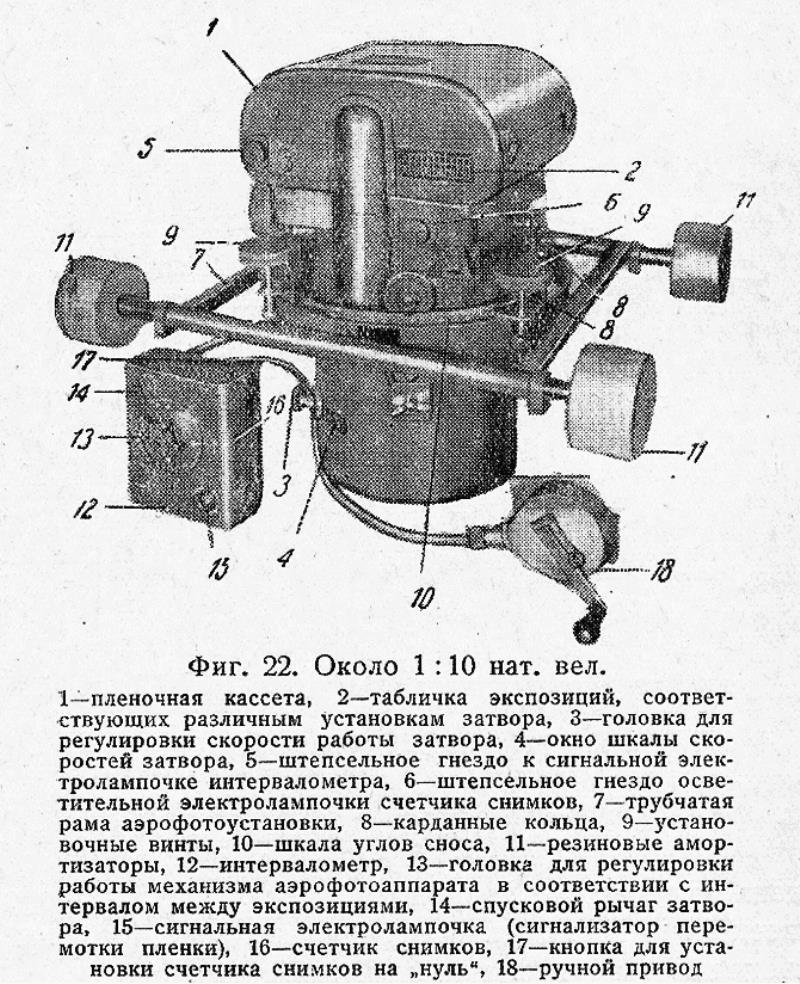
http://www.ussrphoto.com/UserContent/2542015_resize_image.jpg
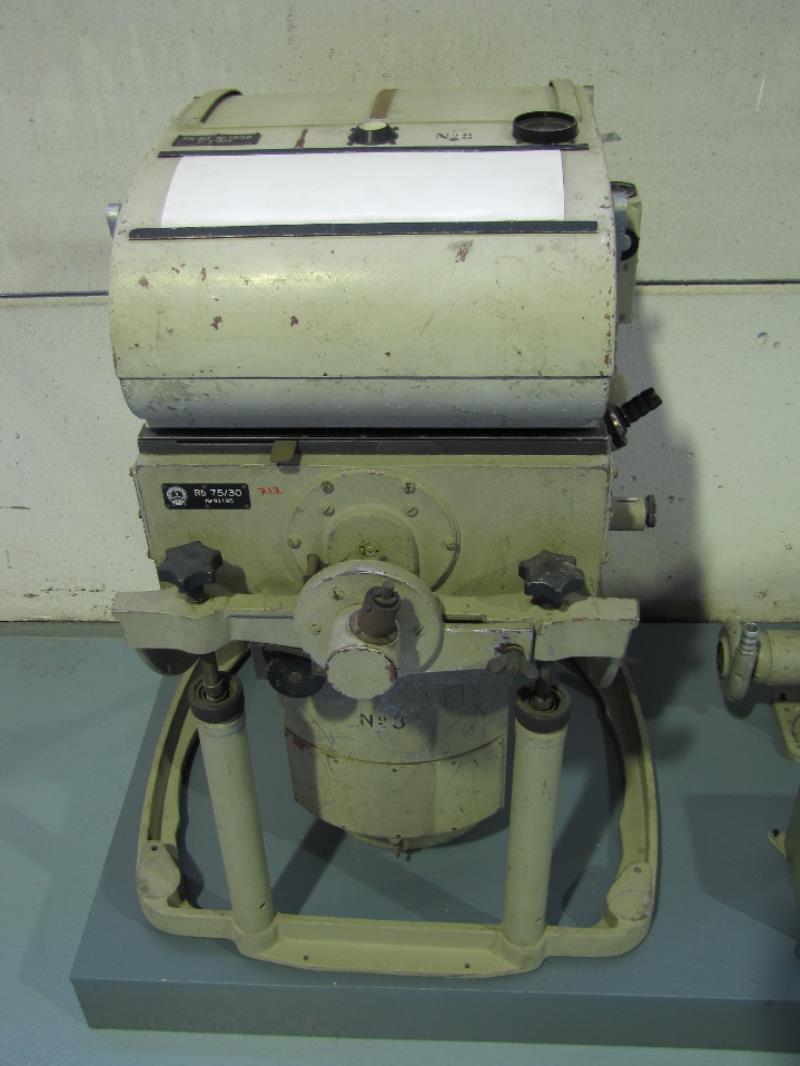
http://www.ussrphoto.com/UserContent/2542015_rb.jpg
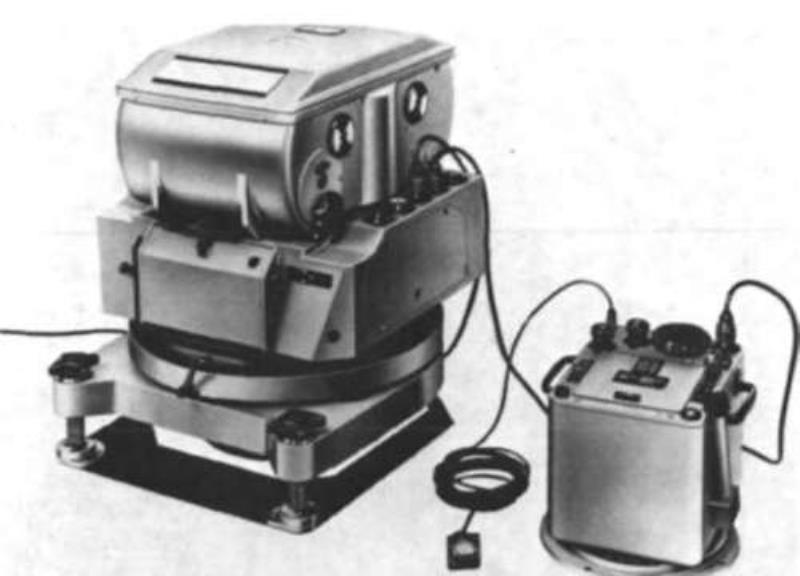
http://www.ussrphoto.com/UserContent/2542015_RMK-15.jpg
|
| altix |
Posted - Apr 25 2015 : 11:31:06 AM
Dear Vlad and Okynek
I just wanted to say that almost all designs of military optical equipment in Soviet Union in late forties and in fifties were German developments of WWii era. These military devices were copied and produced on Soviet plants or were assembled from German parts.
Say, Arsenal in Kiev produced in 1947-50 military rangefinders, artillery trench binoculars, periscopes, etc. They marked them with the Arsenal logo but all these devices were brought from Germany.
At the same time the main places where German military optics was brought are Zagorsk, Novosibirsk and KMZ. These factories got the main amount of optics connected with munition. Of course now it is very difficult to get any information about what actually was produced there in these years. Note that many documents connected with Soviet reparation politic in occupied Germany are sill under the seal <top secret>.
Here is one example
This is a Siemens gun camera from war time
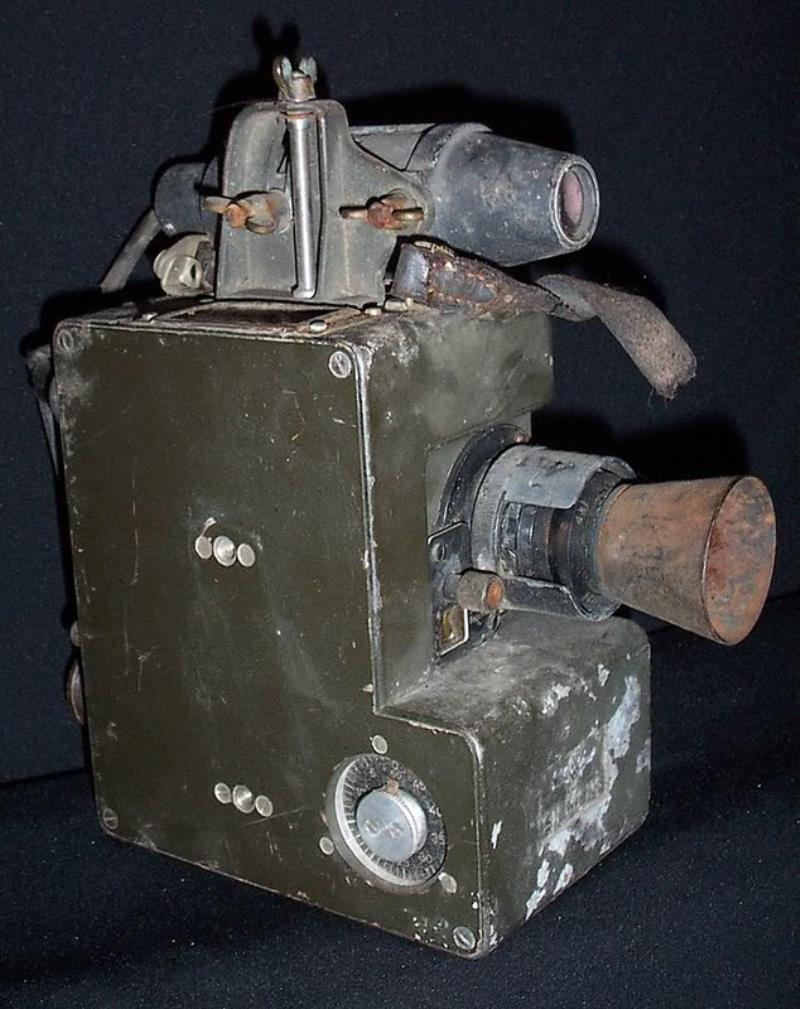
http://www.ussrphoto.com/UserContent/2542015_1935.jpg
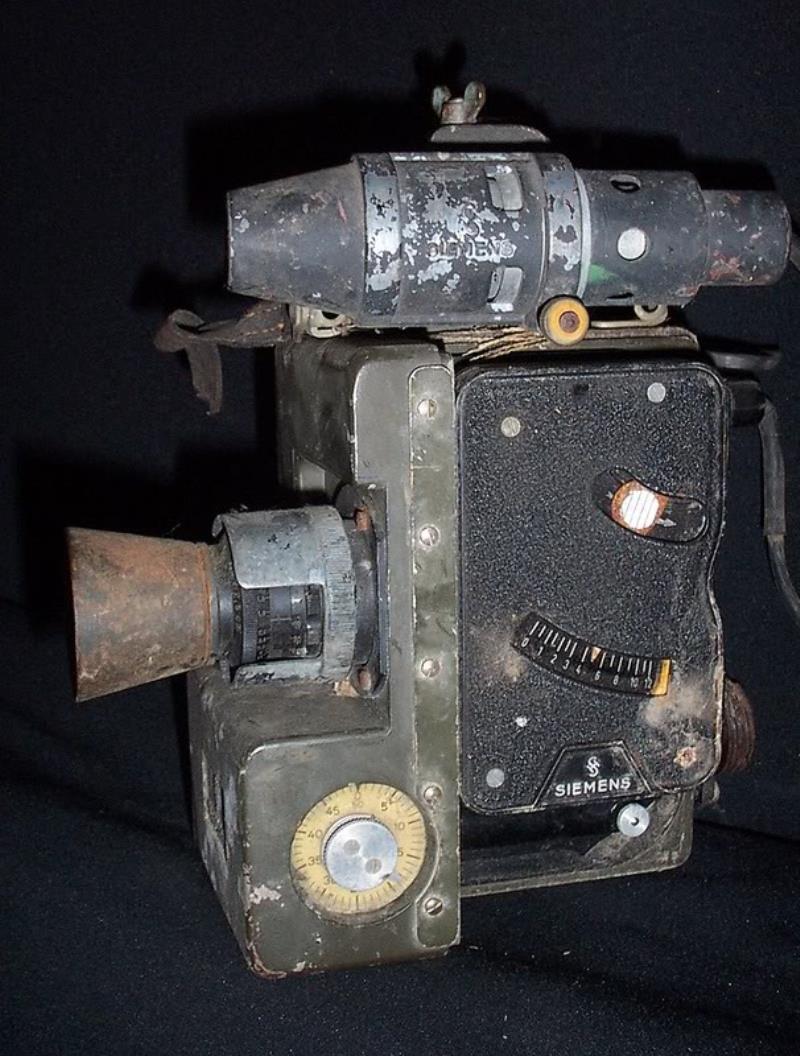
http://www.ussrphoto.com/UserContent/2542015_1937.jpg
And here is Soviet RFK-1 from fifties:
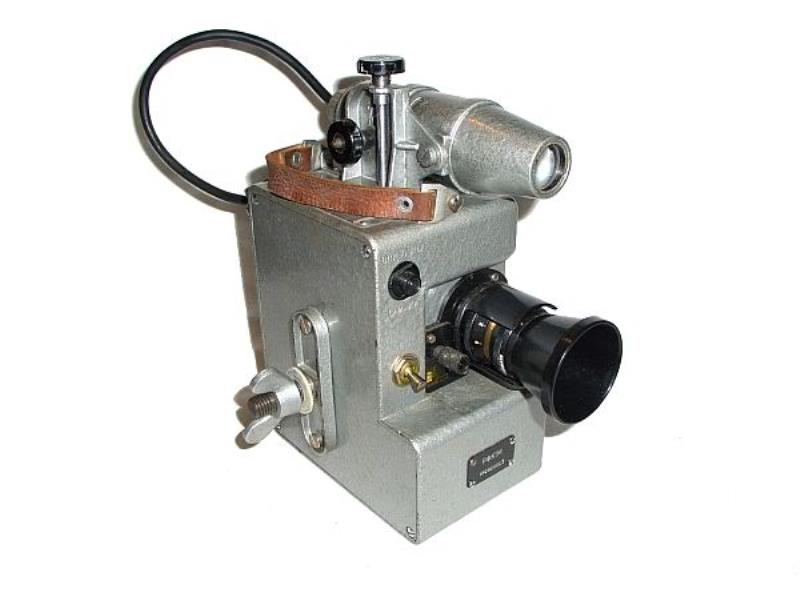
http://www.ussrphoto.com/UserContent/2542015_1950.jpg
There are some differences but the main design is the same. I definitely know that Soviets had brought the entire Siemens factory (Beendorf) to USSR. This factory specialized on plane military equipment.
As I already said some details on your cameras are very typical for German design.
with best regards
altix
|
| okynek |
Posted - Apr 24 2015 : 3:38:06 PM
That camera had few more gears on the front of the camera, as I remember. I was asking buyer to send me pictures, but I did not get any responses. It was probably 5 years ago. |
| Vlad |
Posted - Apr 24 2015 : 3:08:05 PM
Hi Oleg, what were the extra parts you're speaking of? Just curious.
Thanks,
Vlad. |
| okynek |
Posted - Apr 24 2015 : 2:42:26 PM
I'm glad that someone found this camera in USSRPhoto archives and open this post. I tried to make research about this camera but get nowhere. Nothing what I found matched to the particular camera. Foreign origin of the camera is not out of the questions, but it unlikely. German camera IMHO would be more sophisticated, and less tough. Medical use for the camera also possible, but much more chances in IMHO that it part of the military machinery. Whole camera body carved from single brick of bronze. It weight probably 10 lb (4kg). Everything is hand made, and every camera has it little differences. Considering heavy body construction this camera could be built for a service ship, or submarine, or for tank, or may be for testing bombs, possibly it was used in airplane to survive the crash. it literally indestructible. The built-in red filter and round shape of the pictures may tell that it was used for infrared photography, with ultra wide lens.
As Vlad already mentioned, I bough 3 of these cameras from US seller on eBay about 10 years ago. Seller was mostly selling Soviet military uniforms, belts, buckles, etc. Seller told me that all military stuff what he had, including cameras, came from abandoned soviet miliray base in Ukraine. He had 7 cameras like this, I bought last 3. Whereabouts or first 4 camera sold by the seller is unknown. One more camera with some extra parts was sold on eBay few years ago. So total known cameras count is 8.
I hope that someone have more information about this camera.
|
| Vlad |
Posted - Apr 23 2015 : 08:35:46 AM
Hi Altix,
I would go against the semi-manufactured theory here because there were a whole series of these cameras found at that military base, I believe more than 4. The Moment shutter looks like it is built-in factory-style as there are multiple controls on this camera to control that shutter and they do not look hand made. My best theory is that it is a "Back" from a much larger aggregate that is installed on an airplane. It looks like a back off something like this:
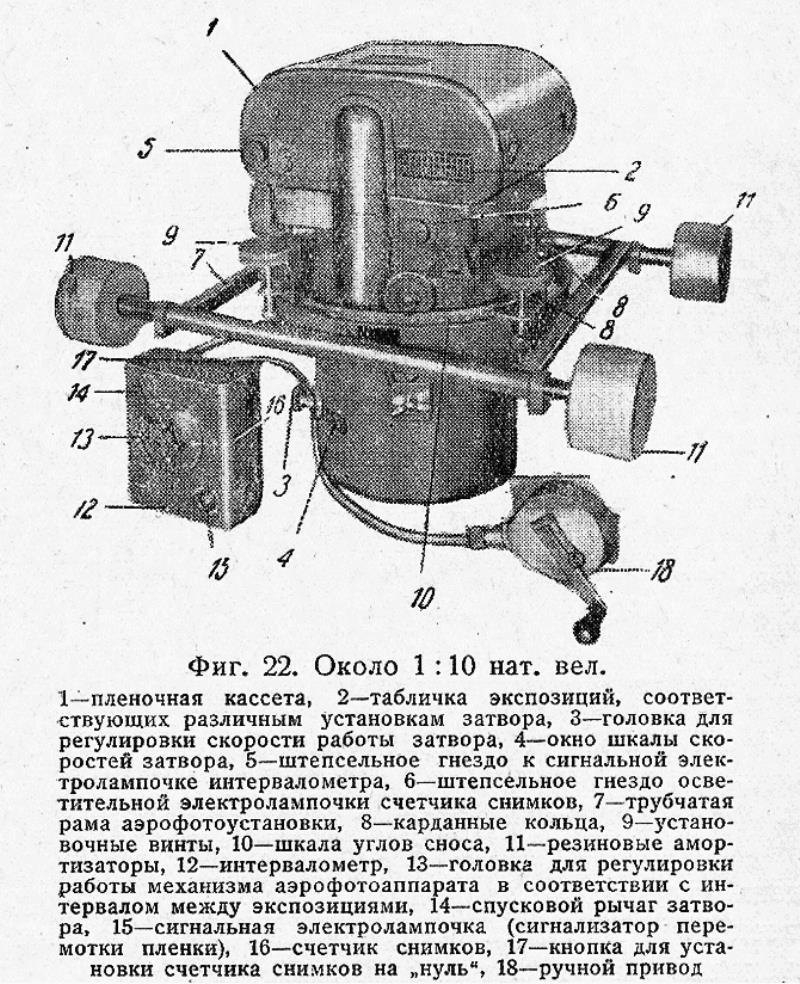
http://www.ussrphoto.com/UserContent/2342015_AFA-13-scheme.gif
Cheers,
Vlad |
| altix |
Posted - Apr 17 2015 : 02:05:04 AM
Dear Vlad,
It is very possibly that it is a military camera. Fundus camera is the most reasonable explanation of round shape of mask and build-in red filter with the absence of any optical block on the camera. I cannot find the reason why military needed round shape of exposures. But it is more likely to be a military camera when it was found on the military base.
I cannot agree that the Moment shutter is an indication of Soviet origin of this device. For me it is strange that the camera has no identification seal of the manufacturer and serial number. It was a standard practice to put a logo of a factory on every optical military device produced in USSR in forties or fifties. Usually this logo was put on the place where it is easy to find. But of course it is possible that it was engraved on the housing that is missed.
There are some other details that look strange for Soviet device like the shape of knobs on the back door or the shape of engraved numbers.
Remember that military optical devices were produced mainly in Novosibirsk, Zagorsk and KMZ. After the war they mainly assembled military devices from the incomplete German items or spare parts. Only in 1950 started the production of fully Soviet military optics utilizing German war-time technology. Only from Zeiss Jena to these three factories was transported 1105 tons of semi-manufactured articles, large part of which were military devices. In a similar way comlete or semi-complete military devices came from another German manufacturers and from German warehouses in occupation zone (remember e.g. "Soviet" Robots on Soviet military aircraft)
Meanwhile due to the reparation program German factories continue to work for Soviets. Say, Carl Zeiss continued to work almost entirely for reparations even after its almost complete dismantle. They supplied USSR with theodolites, aircraft photographic equipment and military devices up to the middle of fifties.
So in my opinion there is a high possibility that this is not entirely Soviet device but rather some modification of some semi-manufactured one. However I have no direct proofs of this statement. |
| Vlad |
Posted - Apr 15 2015 : 11:37:27 PM
Hello everyone,
I have one of these cameras, I have traded with Okynek for one of his duplicates some time ago. According to him these cameras came from an abandoned military base in Ukraine. It is a military cameras probably installed on a lens mounted on an aircraft. It is also definitely of Soviet origin as it contains a Moment-24C shutter in it, I tried to take a picture of it here below:
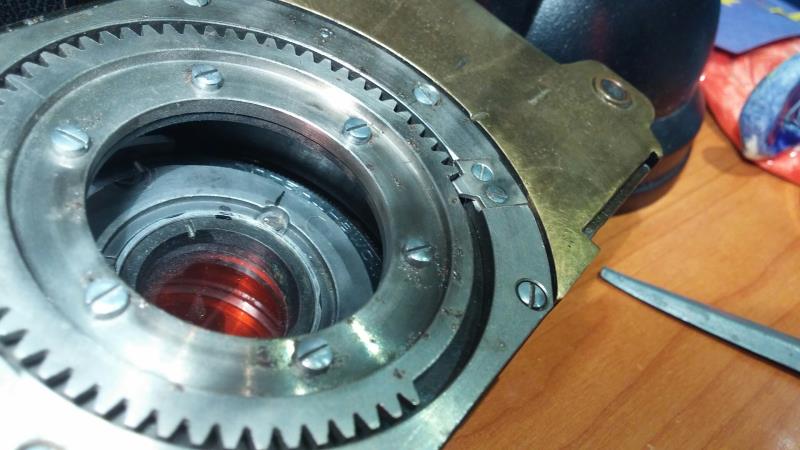
http://www.ussrphoto.com/UserContent/1542015_20150415_233120.jpg
Cheers,
Vlad
|
| altix |
Posted - Apr 13 2015 : 1:31:44 PM
The construction of this camera, the round mask in film channel and the red build-in red filter suggest that it was designed to take pictures of retina fundus. It is interesting medical camera but I am not sure that it has Soviet origin. |
